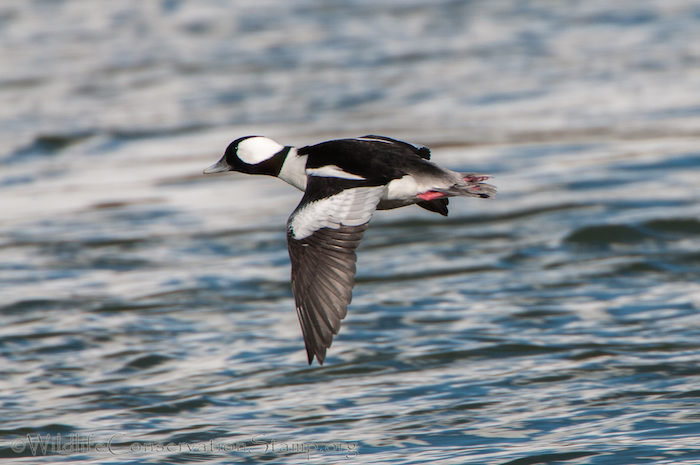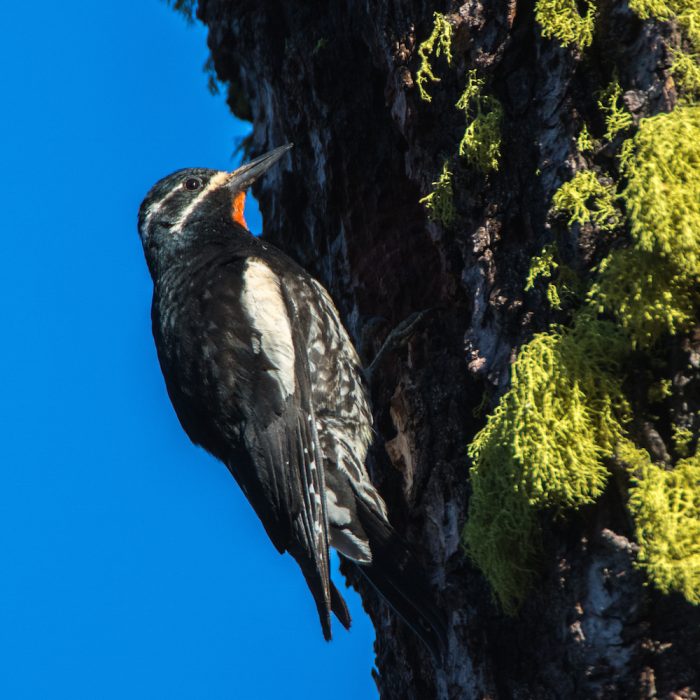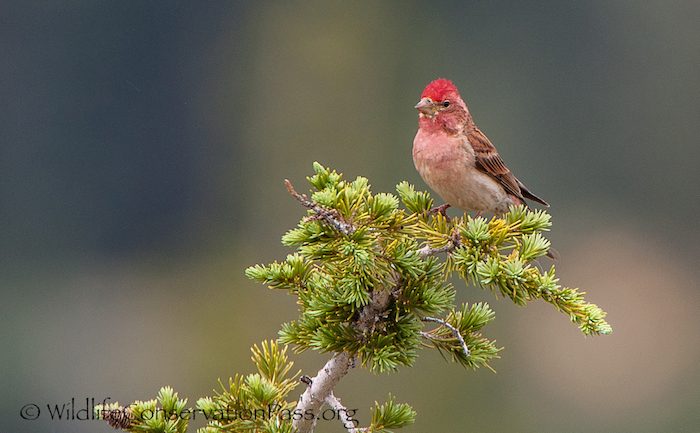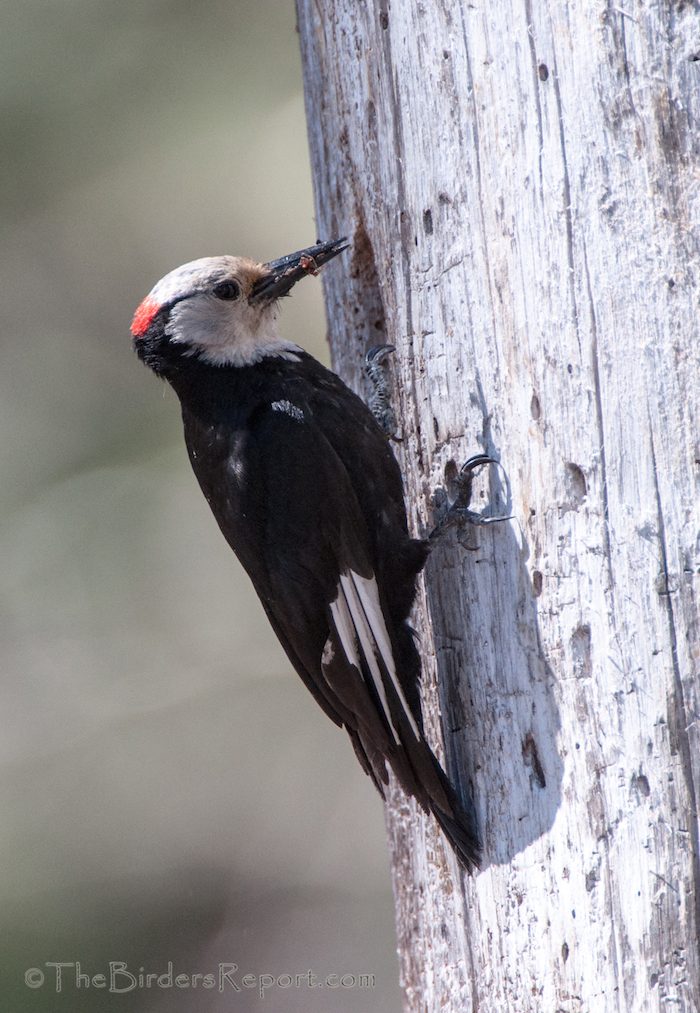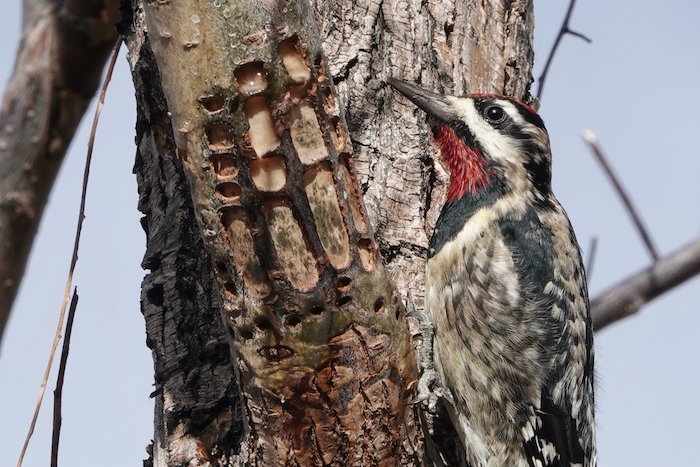
Yellow-bellied Sapsucker
There are about 200 species of woodpecker in the world. Twenty-three of those species are native to the United States, but only three are designated “sapsuckers.” These three were originally treated as forms of one species, the Yellow-bellied Sapsucker. In 1983 they were split into separate species. Lucky for us, even though the Yellow-bellied Sapsucker is an eastern bird, we occasionally find them here in Shasta County. This bird was found at Lema Ranch, one of our local birding hotspots. Note the two different types of holes in the bark. The large, rectangular wells must be continually maintained for sap to flow and the bird licks the sap from the hole.
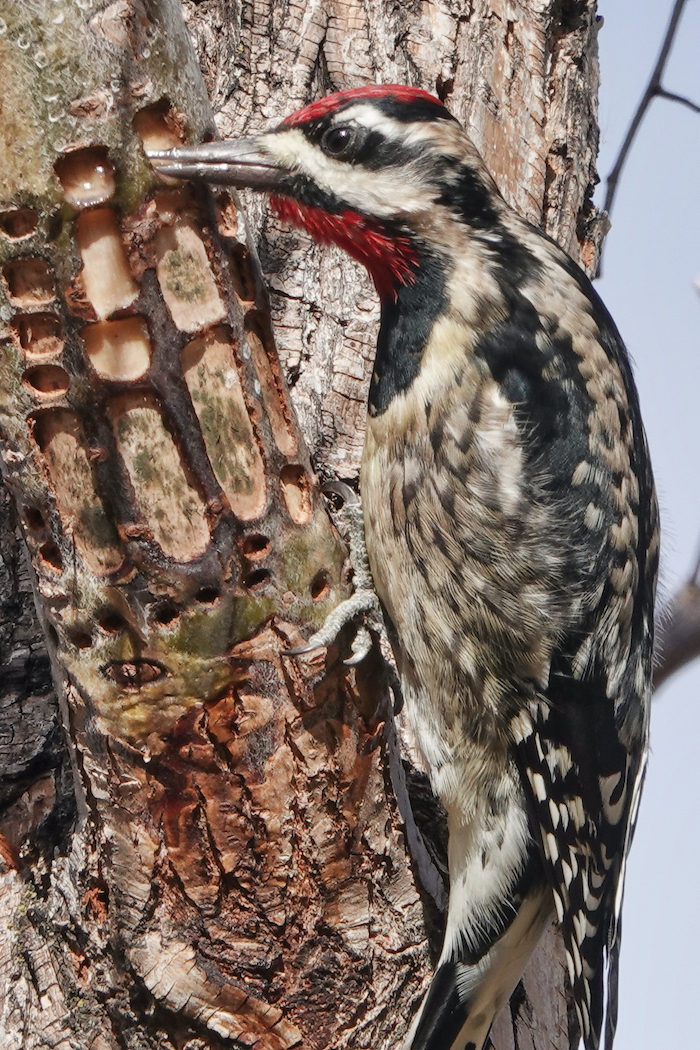
The smaller round holes placed in horizontal rows are probed by the bird inserting it’s beak to retrieve the sap. This Red-breasted Sapsucker probing these small holes with its beak is probably the most often seen here in the northstate.
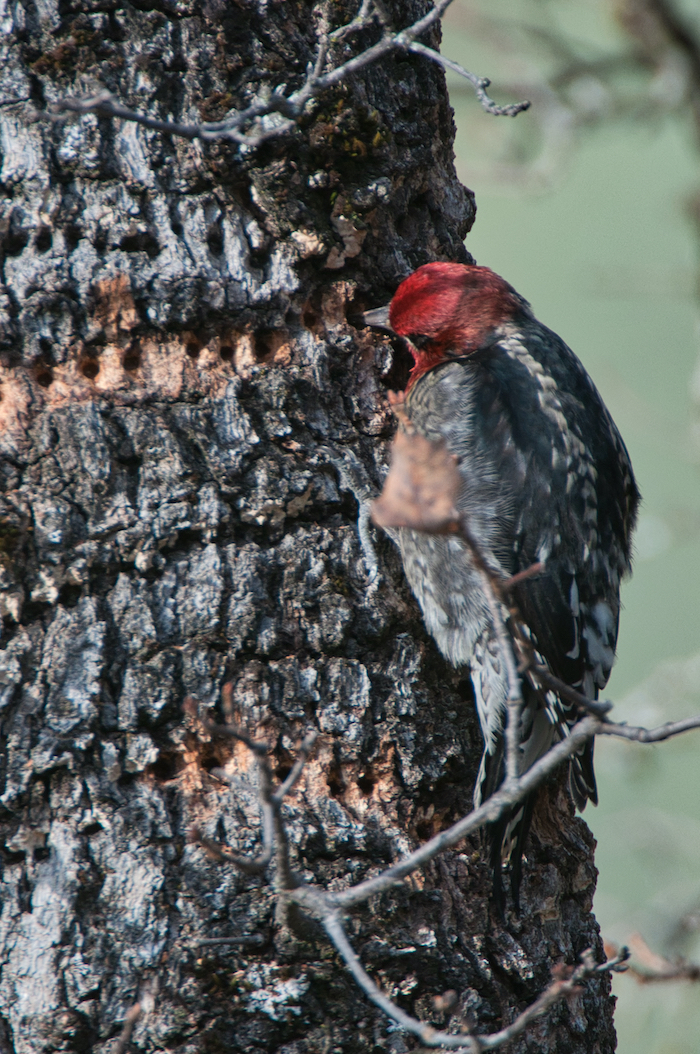
This Red-breasted Sapsucker was working on the largest trunk of a lilac bush in our yard.
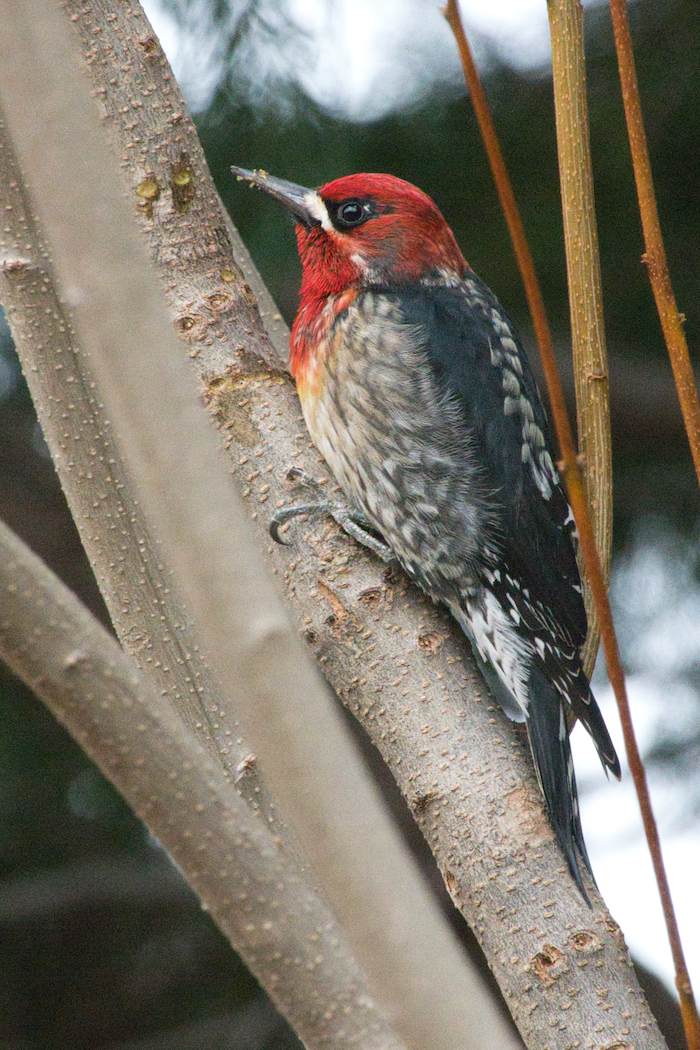
The Red-naped Sapsucker can be a bit harder to find as they don’t have a large presence in California, even though they nest in the far northeastern corner of the state and we found this one nesting in Lassen National Park. This sapsucker has a black stripe along the side of his head, bordered by 2 white stripes and a red nape.
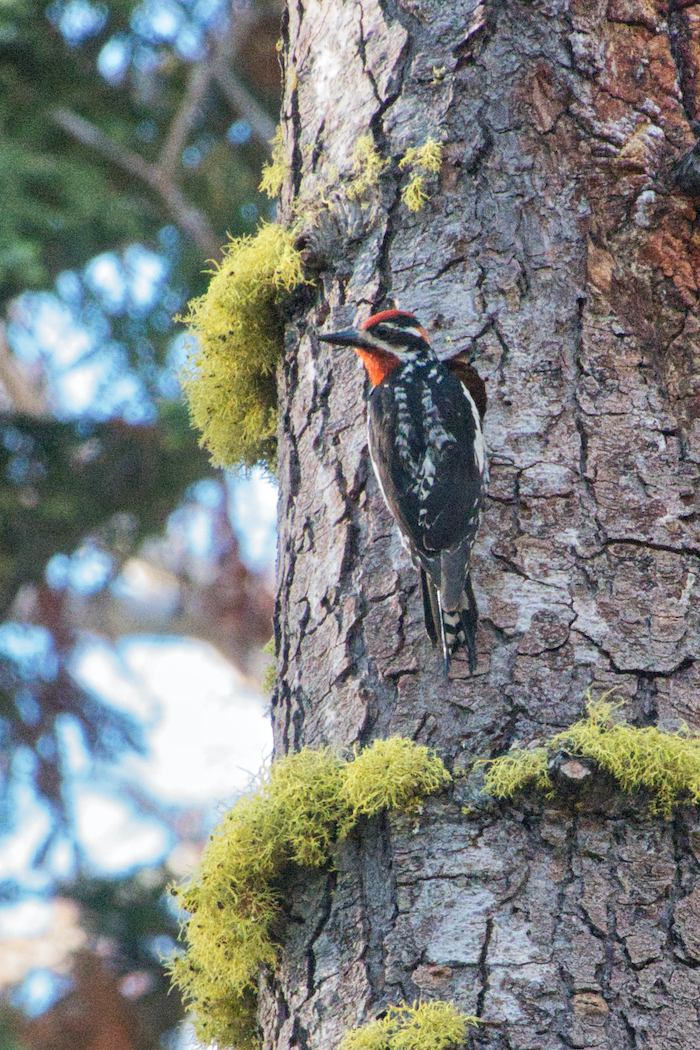
Unlike the Red-breasted Sapsucker, the male Red-naped Sapsucker sports a red neck over a black bib. The female chin and upper throat may be white and lower throat red.
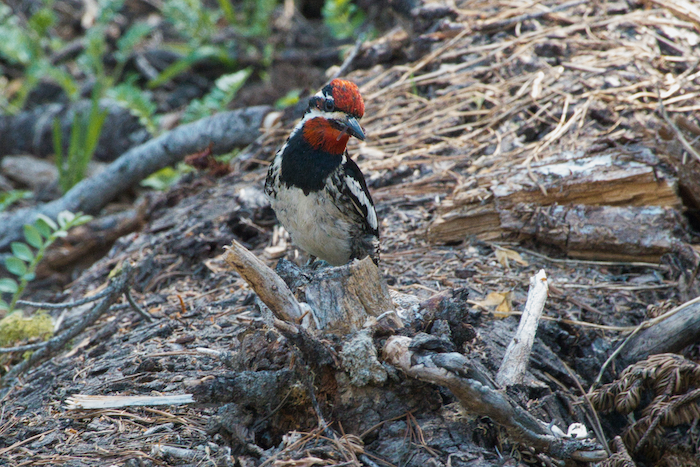
Confusing some folks not familiar with the Williamson’s Sapsucker is the fact that the male and female look like different species. The male is very distinctive with white wing coverts and rump. Two white stripes on the face, one above and one below the eye, contrasting strongly with iridescent black upperparts, head, and breast with a red patch on the chin and upper throat, and a yellow belly.
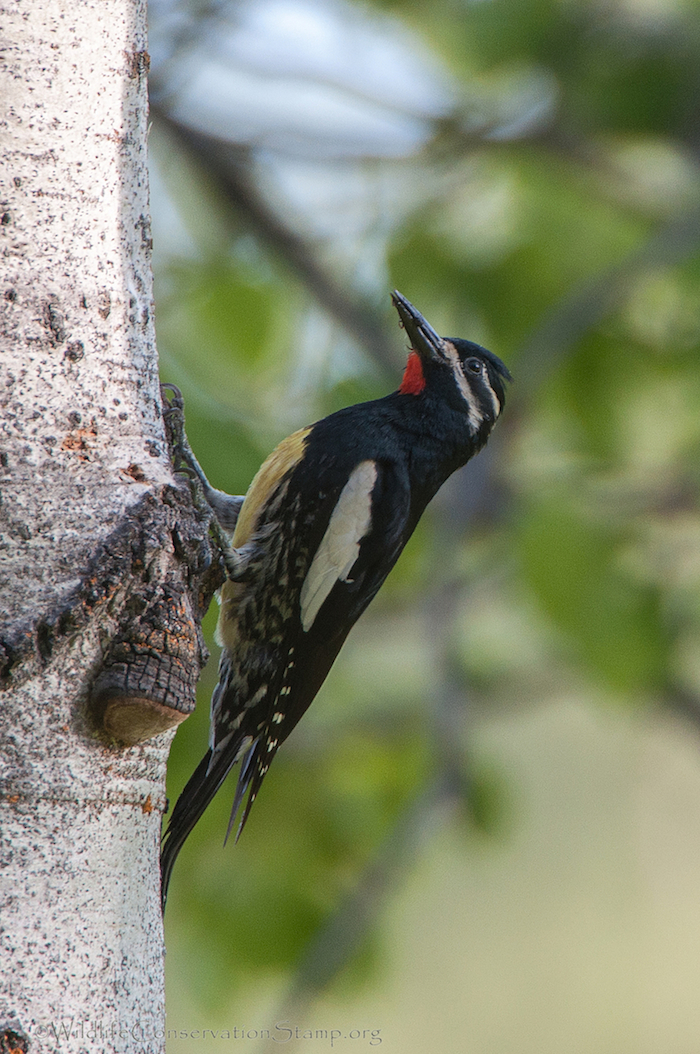
With a fleeting glimpse the female has been mistaken for a Northern Flicker. She has a brownish head, with heavily barred wings, flanks, and upperparts of white, brown, and black as well as a yellow belly and white rump. This is the female bringing insects to the nest.
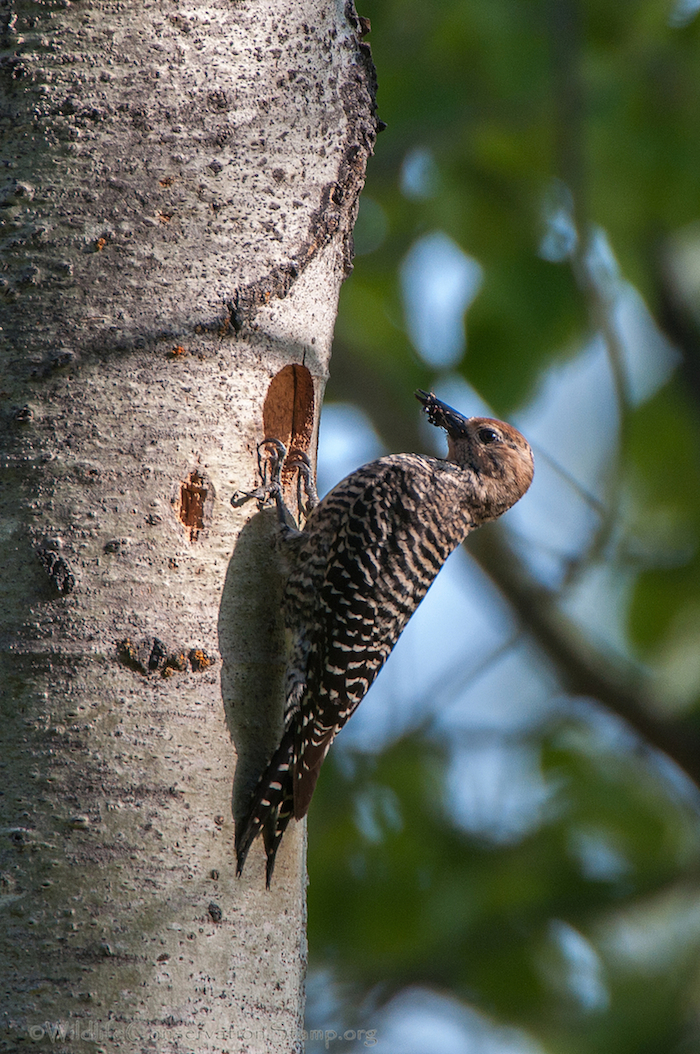
Sapsuckers don’t only feed on sap, they also consume berries and large numbers of ants and other insects, especially once young hatch. This is a shot of the nestling.
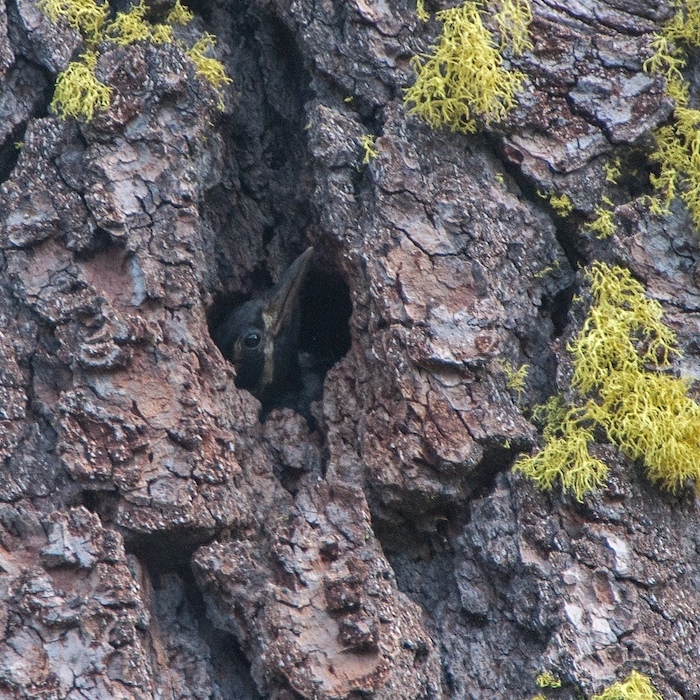
Also, sapsuckers aren’t the only birds that feed from sap wells …
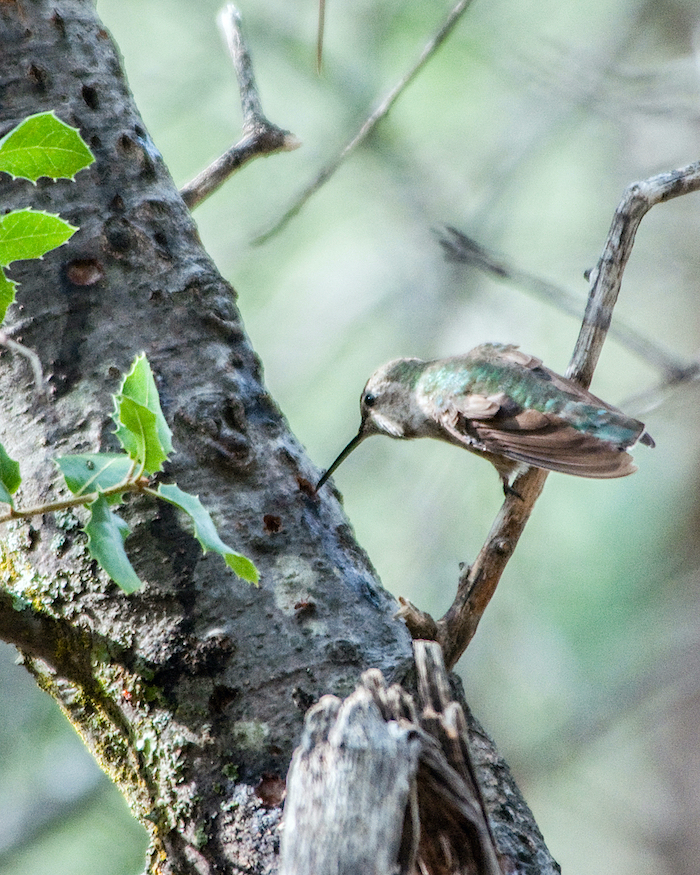
A pair of yellow-bellied sapsuckers collecting insects at sap wells to feed their young.

